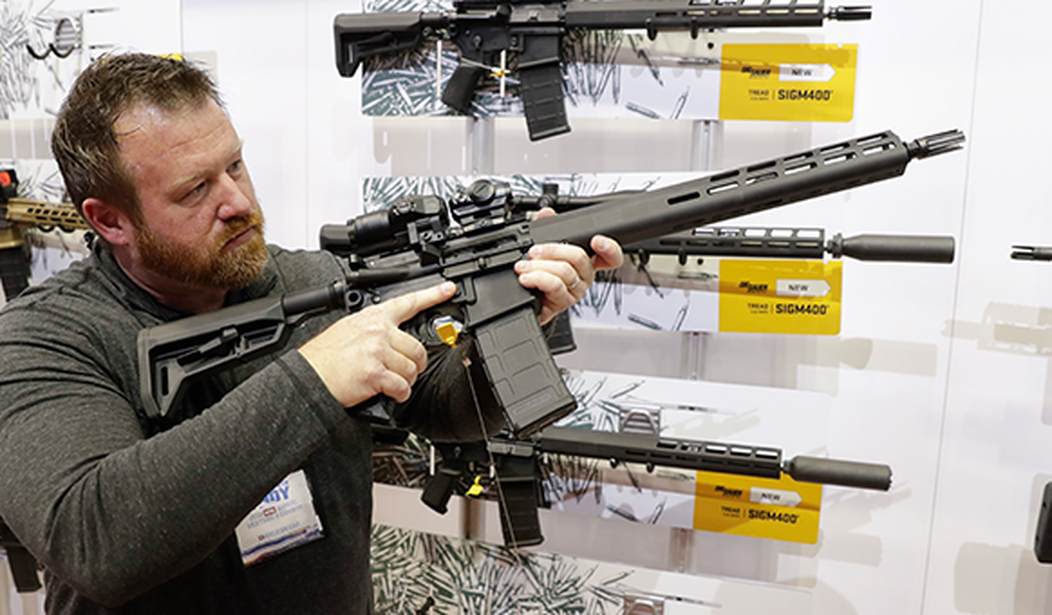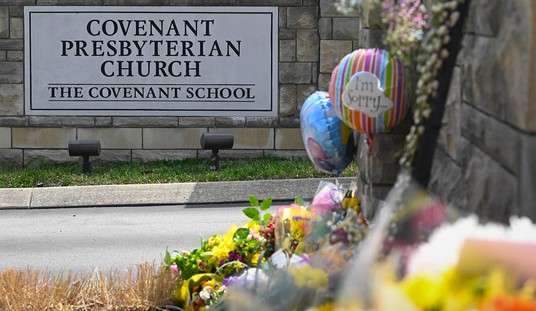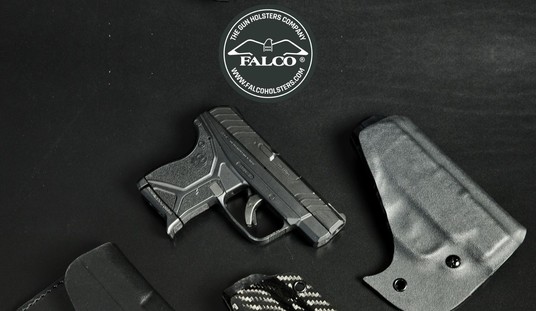The New York Times’ Glenn Thrush has taken a look back at the 1994 ban on so-called assault weapons and “large capacity” magazines, and more importantly, the expiration of that ban a decade later and says that Democrats now “regret” not extending the ban. I’m sure they do, but there’s a good reason why the ban was allowed to sunset in 2004: even many gun control supporters said it hadn’t had much, if any, impact.
Not all of them, of course. Thrush, for instance, quotes Brady’s Brian Malte, who was in favor of extending the ban, but Malte himself acknowledged that most Democrats were ready to move on rather than try to reauthorize the sweeping restrictions.
“You look around today, and there’s this incredible sense of urgency after Buffalo and Uvalde, but back in 2004, there was no enthusiasm to renew the ban among Democrats — none,” said Brian Malte, a former top official for the Brady Campaign to Prevent Gun Violence, which pushed to reauthorize the ban at the time.
“By 2004, Columbine was in the rearview mirror, crime was going down and, well, everyone had kind of moved on,” he added.
Crime was already going down before the ban was put in place, and continued to decline after the ban expired, right up until 2020, when the triple whammy of the COVID pandemic, the riots sparked by the death of George Floyd at the hands of Minneapolis police officers, and the subsequent push to defund the police in many cities helped create the conditions that led to a rapid increase in homicides and shootings in many cities.
But it’s also wrong for Malte to simply declare that Democrats had “moved on” from the gun ban because crime was down and Columbine had happened five years earlier. Just a year before the ban expired a man entered the Lockheed Martin plant in Meridian, Mississippi and opened fire on his co-workers, killing six and wounding eight others. There were other high-profile shootings for the gun control lobby to use as justification for the continuation of the ban, including Columbine itself, but the fact remains that Democrats never launched a serious effort to keep the ban in place.
Why? For starters, because they weren’t in the majority in either chamber. Most Democrats in 2004 didn’t want to talk about gun control at all, because many of them blamed the passage of Biden’s ban on “assault weapons” for turning their legislative majorities into minorities in the 1994 elections that closely followed passage of the ban; something that Thrush, to his credit, does point out in his piece.
By 2004, it had become a widespread view within the party that the assault weapons ban led directly to the Republican takeover over of Congress a few weeks after it passed — and even Al Gore’s loss in 2000.
Democrats would go on to recapture both houses of Congress in 2006, in part by de-emphasizing gun control in tight races and encouraging pro-gun Democrats to run in battleground districts and states. One Democrat elected in that era was Senator Jon Tester of Montana, who remains a critical “no” vote on the ban.
“It was hard to get the band back together,” said Adam Eisgrau, a Feinstein staff aide who helped draft the ban.
“One of the things we were able to do in ’94 was to create consensus against the Rambo-ification of what would otherwise be a standard hunting gun,” he said. “At the time, law enforcement was feeling totally outgunned. And we let people know that we didn’t think all guns were evil or that people who use guns are evil. But by 2004, things had changed, positions had hardened.”
In the end, Ms. Feinstein’s attempts to ram through a bill to reauthorize the ban failed. Over the next four years, the senator and several other legislators, including Representative Carolyn McCarthy, a New York Democrat whose son and husband were shot on a commuter train, introduced similar measures. None got out of committee.
Democratic candidates, like President Barack Obama, Hillary Clinton and Mr. Biden, have put renewing the ban on their presidential to-do lists. But Democrats, even when they controlled the White House, the Senate and the House from 2009 to 2011, did not act.
In other words, Democrats weren’t in a position to extend the ban in 2004, and declined to do so when they had full control of Congress and the White House starting in 2009. They might have regrets about their unwillingness to take up the issue when Barack Obama was elected, but they decided to overreach on healthcare instead of gun control when the had the chance, and that too cost them their legislative majorities.
Thrush ends his piece with a bit of historical revisionism of his own, declaring that “[t]he sense of urgency that impelled action in 1994 began to intensify in 2012 with the increasing frequency and human toll of mass shootings facilitated, in most cases, by weapons that were once banned…” which simply isn’t true. In 2021, the FBI reported that rifles were used in 13 of the 61 active shooter incidents in documented, with the vast majority of these crimes committed by someone using a handgun. In 2020 the FBI documented 40 active shooter incidents, and in only seven of them were rifles the sole firearm used. Five other active shooters used a combination of rifles, shotguns, and/or handguns, but most of the shootings were perpetrated by individuals using handguns only.
If we want to go back further, we can look at this recently released National Institutes of Justice study, which found that over the past 50 years more than 75% of all mass shootings have involved handguns, with semi-automatic rifles used in approximately 25% of the incidents. The data simply doesn’t match the rhetoric from gun control groups and anti-gun politicians, but that won’t stop them from trying to rewrite history, or the Bill of Rights, going forward.









Join the conversation as a VIP Member